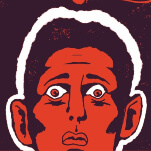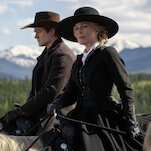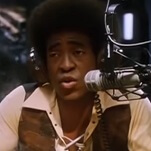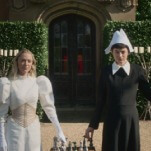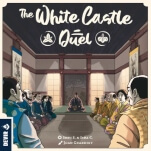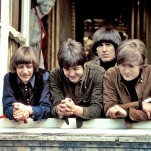England became England in 1066, at the Battle of Hastings, when William the Conqueror led his Norman armies to victory over the Anglo-Saxon forces. That's why generations of schoolchildren have memorized that date. What led up to that moment, who the Normans were, why the Anglo-Saxon regime lost—all the context that makes 1066 more than a number—are the subject of the lively history Queen Emma And The Vikings. Journalist Harriet O'Brien chooses an intriguing and relatively unheralded figure on which to hang her tale: Emma, the daughter of a Norman king, wedded as a girl to Aethelred, the Anglo-Saxon king of England. The wedding was an attempt to forge an alliance against the Viking raiders that had been plaguing England for decades. After Aethelred's death 14 years later, Emma, half-Danish herself, hooked up with a notorious Viking invader. She managed to place two of her sons on the English throne in a time of cutthroat intrigue battles over succession.
Few contemporary records show details about Emma's life, so O'Brien makes much of court documents that list Emma as a witness. Her methodology in writing about these contracts and treaties illustrates the way she approaches her subject as a whole. First she extrapolates creatively from what's known about the "witness" role to place Emma in a semi-fictional scene. Then she steps back for a look at the social hierarchy of 11th-century England, the legal status of women, and the historical-critical techniques that allow a glimpse beneath later forgeries, ideological corrections, and political censorship in the witnessed documents. In this fashion, O'Brien leads readers through numerous detailed dalliances with semi-magical folk remedies, the legal status of vengeance, the market for religious relics, and whether the Vikings wore horned helmets. (Answer: Not likely. Such headgear would be a deadly encumbrance in battle, where long swords and spears would catch on its hooks rather than sink into Anglo-Saxon flesh.)
Emma's fascination turns chiefly upon one image: a seated queen holding a book presented to her by a monk. In this engraving, Emma emerges as a woman determined to write her own version of history, in spite of the handicap of illiteracy. Instead of a "royal bedfellow" simply witnessing the acts of others, valuable only for her womb and her seal, she becomes an author of her life, a maker of meaning, an apologist for her reputation and that of her multi-ethnic, blended families. O'Brien's book, by turns diverting and captivating, doesn't just use Emma as a window into a mysterious yet crucial series of events—it asks how she would want to be remembered, and honors what it imagines would be her request.

















